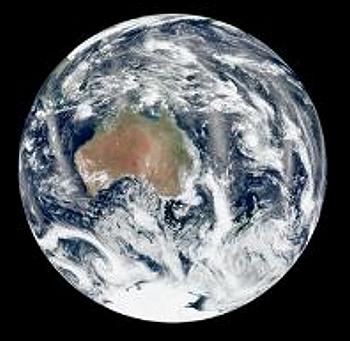http://ens-newswire.com/2017/06/13/scientists-publish-2000-year-record-of-43-climate-gases/
Scientists Publish 2,000 Year Record of 43 Climate Gases
CANBERRA, Australia, June 13, 2017 (ENS) – Comprehensive records tracking changes in all 43 greenhouse gases that contribute to human-induced climate change back 2,000 years are now available to the public as a result of research conducted by an international team of scientists.
Led by researchers from the Climate Science Centre of Australia’s Commonwealth Scientific and Industrial Research Organisation, CSIRO, and the University of Melbourne, the scientists have published the most comprehensive and highest quality records of greenhouse gases ever compiled.

The Australian Bureau of Meteorology’s Cape Grim station in northwest Tasmania, which gathered data for this paper. (Photo by World Meteorological Organisation)
People usually think of six greenhouse gases because that is the number regulated under the UN Framework Convention on Climate Change, but according to these records there are, in fact, 43 greenhouse gases that affect the climate.
“This continuous record over the last 2,000 years has been meticulously constructed by combining greenhouse gas measurements from dozens of laboratories around the world,” said CSIRO principal research scientist and report co-author Dr. David Etheridge.
He calls the study one of the largest-ever Australian contributions to global climate change assessments. The paper, titled “Historical greenhouse gas concentrations for climate modelling” is published in the current issue of the journal “Geoscientific Model Development,” a peer-reviewed open access scientific journal published by Copernicus Publications on behalf of the European Geosciences Union.
Other contributors to the paper include scientists from Germany, Italy, the Netherlands, Norway, Switzerland, the United Kingdom and the United States.
The study states, “Atmospheric greenhouse gas (GHG) concentrations are at unprecedented, record-high levels compared to the last 800, 000 years. Those elevated GHG concentrations warm the planet and – partially offset by net cooling effects by aerosols – are largely responsible for the observed warming over the past 150 years. An accurate representation of GHG concentrations is hence important to understand and model recent climate change.”
Dr. Etheridge said that to arrive at the results, a comprehensive database of measurements was combined with information on aerosol, solar, volcanic and land-use impacts on climate to accurately simulate observed climate over past centuries in climate models.
“We took data from contemporary and archived air samples, and from air trapped in ice bubbles in polar ice cores and compacted snow, also called firn,” he explained.

Composite image of Earth from space 2012 (Image by NASA scientist Norman Kuring)
“Providing long-term spatially and seasonally precise measurements of greenhouse gases for input into climate models will allow more robust future climate estimates,” Dr. Etheridge said.
Through CSIRO and the Bureau of Meteorology, Australia is the major contributor to this global greenhouse gas record, using observations from the Bureau of Meteorology’s Cape Grim station in northwest Tasmania and from the Cape Grim Air Archive.
CSIRO, with the Australian Antarctic Division, the Australian Nuclear Science and Technology Organisation and other collaborators, is also the primary source of greenhouse gas data in the pre-instrumental era, using measurements from air extracted from Antarctic ice and firn.
The record includes, for the first time, a set of 43 distinctive greenhouse gases that are released into the atmosphere as a result of human activities and industrial processes.
“These observations clearly show the relentless and near-continuous rise of some of the most important greenhouse gases like carbon dioxide, methane and nitrous oxide since 1750,” Dr. Etheridge said.
Report co-author Dr. Paul Fraser from CSIRO said it is encouraging to see the decline in some greenhouse gases, such as CFC-12 and CFC-11, which is measurably in response to the Montreal Protocol.
Dr. Malte Meinshausen from the University of Melbourne’s Australian-German Climate and Energy College and lead author of the report said that this newly published database of continuous and high quality data will drive global climate model simulations currently being conducted by international modelling groups ahead of the next assessment report of the Intergovernmental Panel on Climate Change, IPCC, due in 2021-2022.
Dr. Meinshausen said, “Following the marathon of decades of efforts in Australia and around the world to collect and process all those data, our study was taking the last step of putting it all together into one coherent picture.”
沒有留言:
張貼留言